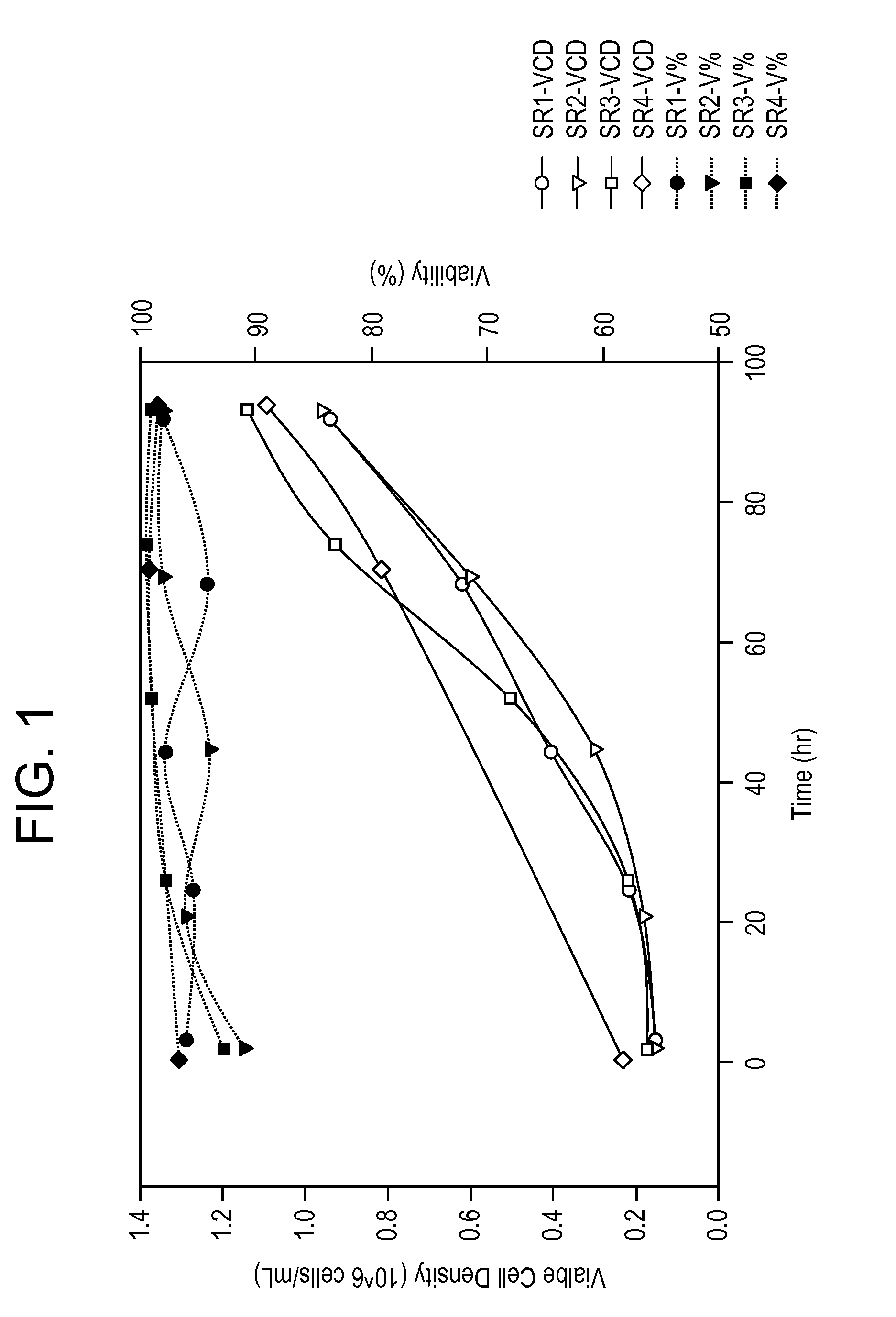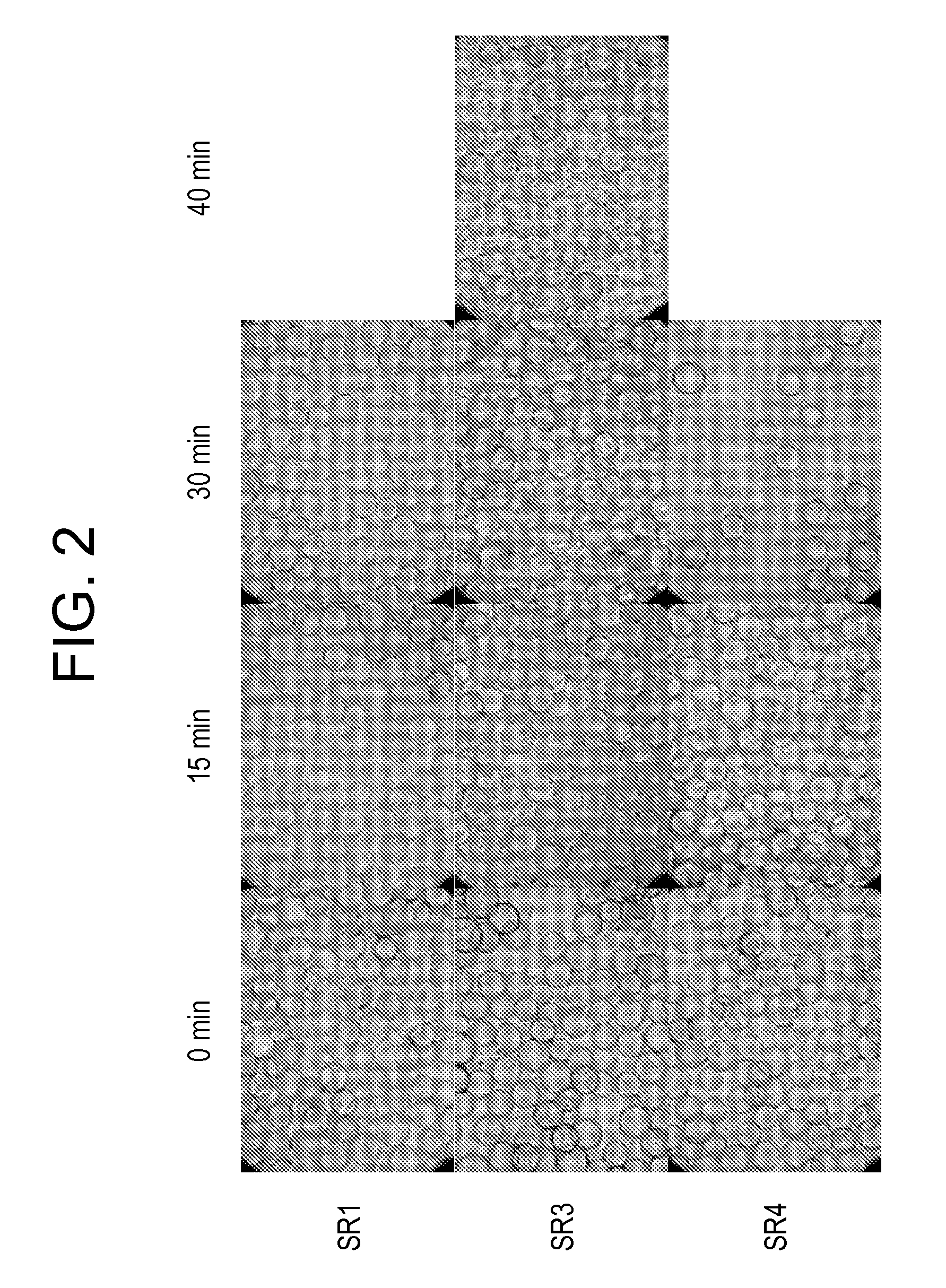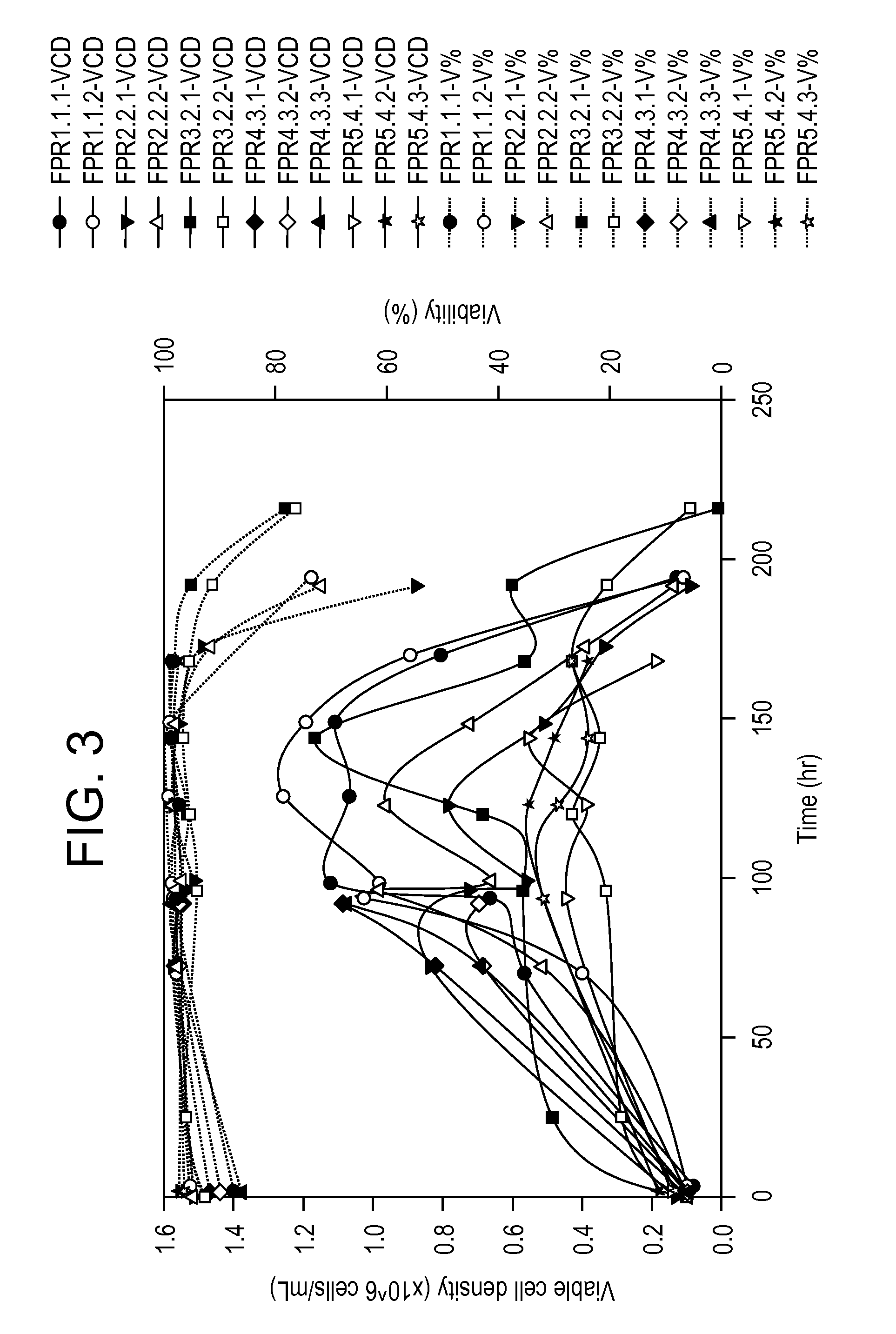Methods for cultivating cells, propagating and purifying viruses
a technology of cell culture and virus, can solve the problems of long lead time required to produce vaccines, many existing mdck cell lines suffer from one or more defects, and cannot be applied in the field of cell culture medium and methods for cultivating cells
- Summary
- Abstract
- Description
- Claims
- Application Information
AI Technical Summary
Benefits of technology
Problems solved by technology
Method used
Image
Examples
specific embodiments
[0265]1. A method for producing influenza viruses in cell culture to a log 10 TCID50 / mL of at least about 8.0 and / or to a log 10 FFU / mL of at least about 8.0, comprising:[0266](a) proliferating MDCK cells in a serum-free culture medium, while maintaining one or more culture conditions selected from the group consisting of: an agitation rate of between about 100 and 200 rpm; a pH of between about 6.0 to about 7.8; a temperature of between about 33° C. and about 42° C.; and dissolved oxygen (DO) of between about 35% to about 100%;[0267](b) infecting the proliferated MDCK cells with an influenza virus without exchanging the culture medium; and[0268](c) incubating the infected proliferated MDCK cells under conditions that permit replication of the influenza virus.
[0269]2. The method of embodiment 1, wherein the culture medium is MediV SFM 110.
[0270]3. The method of embodiment 1 or 2, wherein the MediV SFM 110 comprises 9 g / L glucose.
[0271]4. The method of any one of the preceding embodi...
examples
[0378]The invention is now described with reference to the following examples. These examples are provided for the purpose of illustration only and the invention should in no way be construed as being limited to these examples but rather should be construed to encompass any and all variations which become evident as a result of the teachings provided herein. Of course, it will be appreciated that specific listing or description of particular equipment and reagents used, sizes, manufacturer, etc., is not to be considered limiting on the current invention unless specifically stated to be so. It with be further appreciated that other equipment and reagents which perform similarly may be readily substituted.
Medium and Cell Culture Processes
[0379]Serum-free medium formulations (e.g., MediV SFM 107, MediV SFM 105) useful for the proliferation of MDCK cells, in particular non-tumorigenic MDCK cells, to high density have been described (see, e.g., FL410US and G-FL414US). However, work using...
PUM
| Property | Measurement | Unit |
|---|---|---|
| concentration | aaaaa | aaaaa |
| concentration | aaaaa | aaaaa |
| temperature | aaaaa | aaaaa |
Abstract
Description
Claims
Application Information
 Login to View More
Login to View More - R&D
- Intellectual Property
- Life Sciences
- Materials
- Tech Scout
- Unparalleled Data Quality
- Higher Quality Content
- 60% Fewer Hallucinations
Browse by: Latest US Patents, China's latest patents, Technical Efficacy Thesaurus, Application Domain, Technology Topic, Popular Technical Reports.
© 2025 PatSnap. All rights reserved.Legal|Privacy policy|Modern Slavery Act Transparency Statement|Sitemap|About US| Contact US: help@patsnap.com



